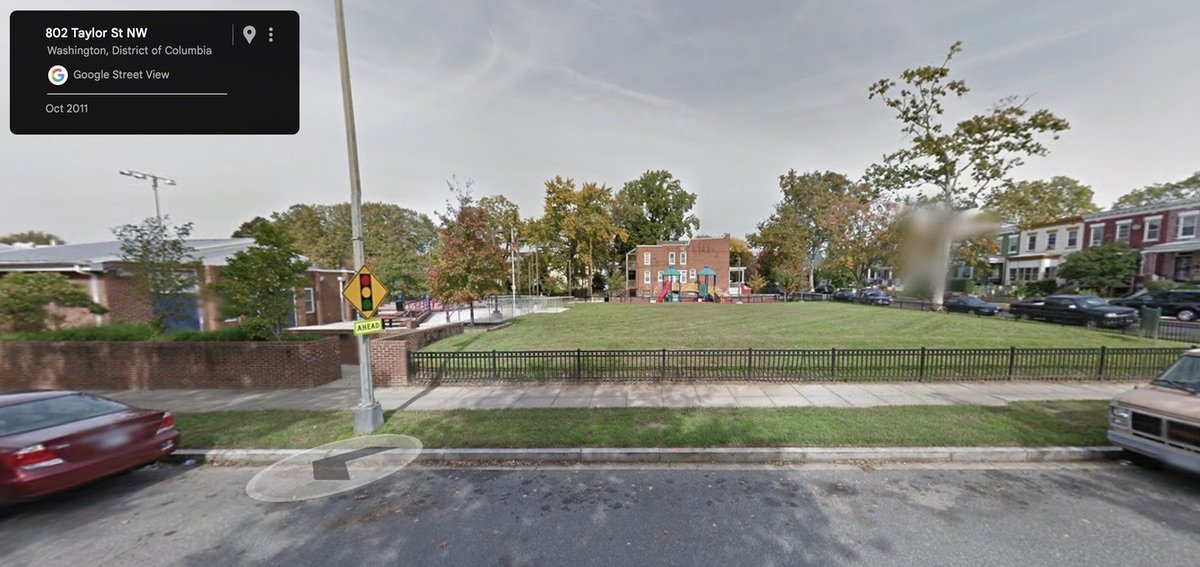Vacant/blighted buildings are languishing and hurting the vibrancy of the Kennedy Street community
/433 Kennedy Street lies vacant with boarded up windows, and a yard left fallow.
by Cesse Ip
It’s no secret that the Kennedy Street corridor has seen plenty of transformation over the last decade. Flipped rowhouses are ubiquitous. Popped-up rowhouses turned into multi-unit buildings are becoming more frequent. Other multi-unit buildings have been “modernized,” such as 839 Kennedy Street. While the benefits of rapid development and gentrification are surely debatable, long-term vacant and/or blighted buildings are not good for anyone except the rats.
Four multi-unit apartment buildings on the 400 block of Kennedy Street NW have been vacant for years: 423, 429, 431, and 433 are all owned by Coloma River, a local development company.
Trash sitting untouched at 429 Kennedy Street NW
Coloma River owns several other buildings along the Kennedy Street corridor.
La Coop, a tenant of Coloma River at 5505 1st St NW, had a highly publicized disagreement last fall with Coloma River’s managing partner, Charles Paret. ANXO has also been a tenant of Coloma River at 5419 1st St NW since 2019.
Coloma River also owns 419 Kennedy Street, according to a November 2019 Google Street View image where a Coloma River sign is visible. Currently this property is under development, but at least four Stop Work Orders have been issued in 2021 for either illegal construction without a permit, or because of unsafe conditions.
Vacant properties often turn into trash dumping grounds, havens for rodents and mosquitoes, and are a general eyesore for the neighborhood.
Sheila Boykin lives on the 400 block of Kennedy Street, and said the properties on her block have been a nuisance since they were bought by Coloma River. The grass in front of the properties is overrun, and trash constantly litters the lawns. According to Boykin, neighbors of the construction at 419 Kennedy Street have experienced structural damage and have had rats enter their apartments through holes caused by the construction.
Google Street view of 419 Kennedy Street NW 2019
A look at construction at 419 Kennedy Street NW, where Stop Work orders intermittently halted progress.
Ongoing construction at 419 Kennedy Street
In response to our inquiry, Councilmember Janeese Lewis George said, "Blighted properties aren't just an eye sore, they also exacerbate public safety issues and make it harder for our communities to recover from the effects of the pandemic. We need developers and DCRA to step up to ensure that these vacant properties become much-needed affordable housing for DC residents."
While four of Coloma River’s 400 block of Kennedy buildings are labeled vacant and/or blighted in DCRA’s website as of 27 July 2021, the label has not been enough to persuade the owner to start developing the properties or resell them. While the vacant designation merely means that it is unoccupied, the blighted designation means it is “unsafe, unsanitary, or otherwise determined to threaten the health, safety, or general welfare of the community,” according to DCRA.
423 Kennedy is listed as vacant-exempt and has been in the system for five years. 431 is listed as vacant and has been in the system for two years. 433 is listed as blighted, vacant with violations, and has been in the system for three years.
The 400 block of Kennedy Street NW
According to the DCRA website, registering a vacant property persuades the owner to come into compliance, especially when the owner fails to actively maintain, preserve and manage the property to ensure it does not become a nuisance to the community. Vacant properties are taxed at the Class 3 real tax rate, currently $5 per $100 of the assessed value. Blighted vacant buildings are taxed at the Class 4 rate, which is currently $10 for every $100 of assessed value.
In 2020, 423, 429, 431 and 433 Kennedy Street collectively paid over $50,000 in taxes. Petworth News reached out to Coloma River and they never responded to four different requests for information.
Higher taxes on these properties might be seen as just the cost of business for development companies like Coloma River. However, while the developers pay the monetary costs, residents pay the price of the perpetual nuisances of vacant and blighted properties. Clearly in the case of Coloma River, DCRA vacant labels are not enough to spark action on these properties, as they have sat vacant for years.
So, what are residents to do?
New construction on the 800 block of Kennedy Street NW
First, in the short term, residents can take action to shine light on the problem. If you live nearby a vacant or blighted property, you can submit complaints to DCRA. Residents can also share complaints with their local Advisory Neighborhood Commissioner and Councilmembers to follow up.
In the longer term, there are plans to reform DCRA in the works at the District level, which may help these types of issues in the future. Earlier this year the DC Council voted unanimously to override the Mayoral veto of the breakup of DCRA into two separate agencies. This law will create a new agency, the Department of Buildings, which among its multiple responsibilities will include “regulating land use and development, and enforcing the regulations and codes governing building construction.”
For this law to go into effect, it will need to be approved in the upcoming FY’22 budget, which should be finalized on August 10th. Meanwhile, DCRA inaction leaves the properties vacant and languishing in our communities.



















